Project management is a highly complex field. There are many things that a project manager must understand to be successful such as the methodologies, reports and tools that exist.
To help you simplify things, we’ve listed the top 14 project management principles that any project manager should know. These principles are a great starting point as you go through the journey of becoming a successful project manager.
Once you learn about the key project management principles, you’ll need a robust tool with the features needed to keep track of your project plan, budget and schedule. ProjectManager offers Gantt charts, kanban boards, project calendars and other project management tools to help you and your team achieve more. Get started for free today.
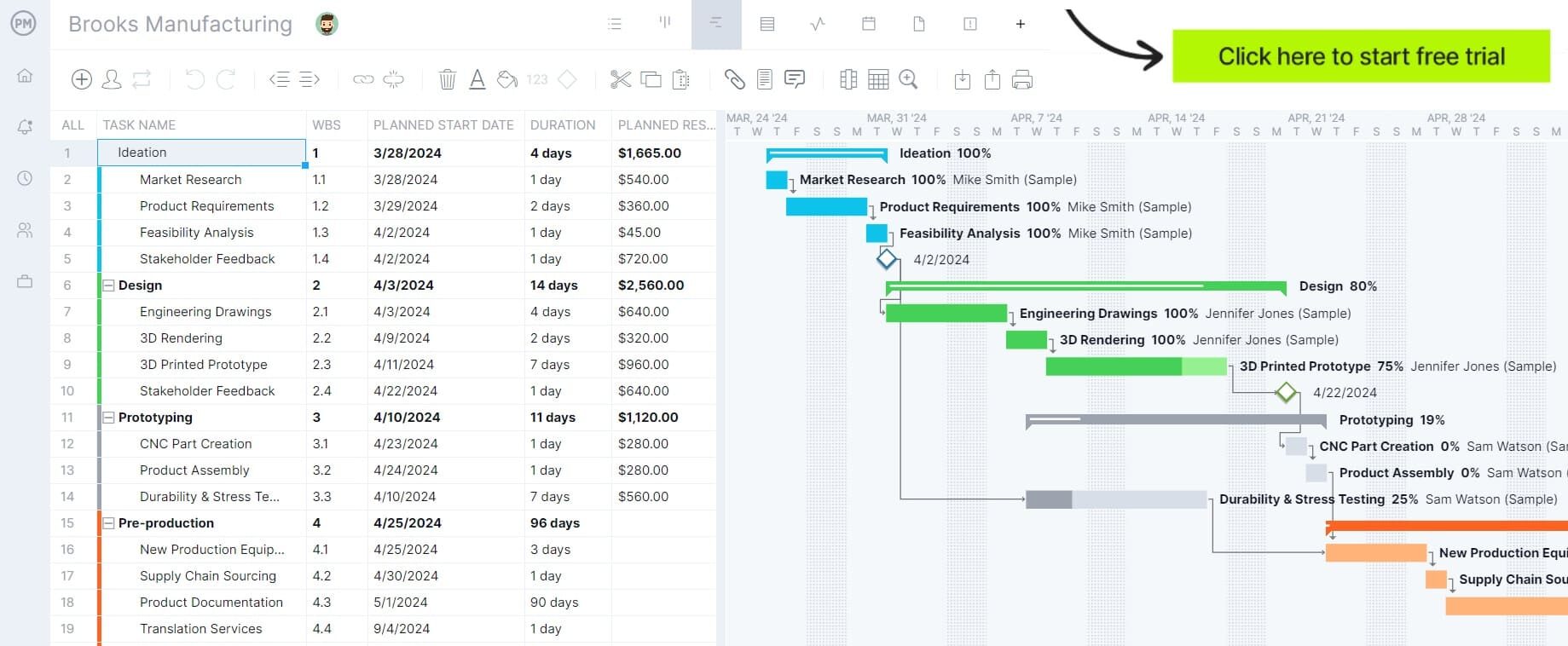
What Are the Principles of Project Management?
These project management principles cover the major areas when managing a project. At ProjectManager, we have tons of project management templates, blogs, tools and other resources to help you manage your projects better.
1. Define a Project Organization Structure
This is the first thing you’ll have to think about when managing a project. The project organization structure is the framework that facilitates the planning, execution and tracking of project activities. To set up your structure, you’ll need to create a project organization chart that specifies the roles and hierarchy of every team member. Then, think about the procedures and guidelines that will be followed by them.
2. Set Clear Project Goals & Objectives
Before you can start the project planning phase, you’ll need to define the main goals and objectives of your project. The project goals define the expected benefits of the project while the project objectives are the steps that you’ll need to take to achieve them. Defining your goals and objectives will set the stage to plan your project scope, schedule and budget.
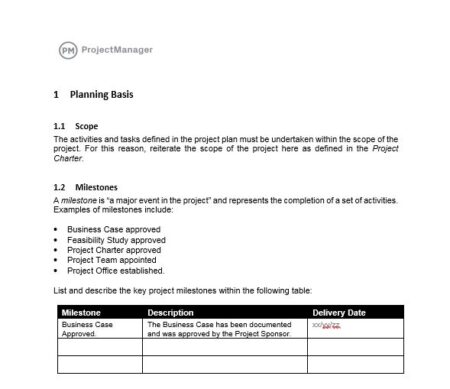
3. Determine the Feasibility of Projects During the Initiation Phase
The feasibility study takes place during the initiation phase of a project. It will determine if a project is worth the effort and cost. The gathering of information and analyzing that data will evaluate the project’s strengths and weaknesses, opportunities and threats. It defines the project, identifies stakeholders and the project team, sets objectives, analyzes requirements, evaluates alternatives and much more.
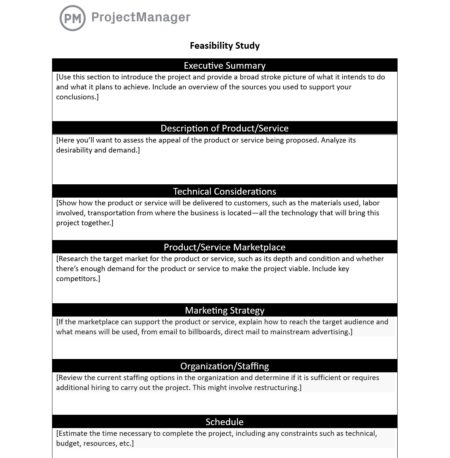
4. Create a Communication Plan
While reporting to the various participants in the project is key, there must be a primary communication plan to regulate communications between yourself and the project sponsor. This is the only way to ensure those project decisions are properly implemented.
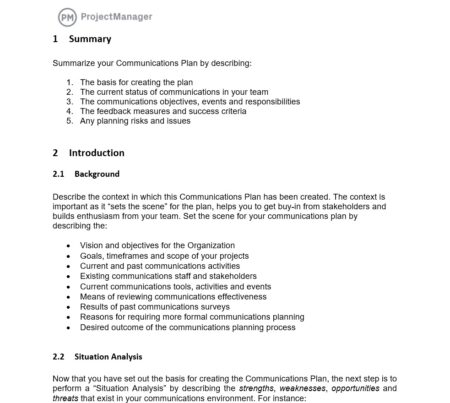
Without having a singular way to disseminate what the sponsor wants to the project manager, you’re not being effective in administrating the project. Even if there are multiple sponsors, they must speak with one voice or risk sending the project into chaos.
You have the responsibility to set this line of communication in place. This entails finding the right person with the right skills, experience, authority and commitment in the executive team to facilitate this important task.
5. Define Roles & Responsibilities
To move forward, a project must have well-defined roles, policies and procedures in place. That means everyone must know what they’re responsible for and to whom they answer. There needs a delegation of authority for any project to function.
It also means that you must know how you’re going to manage the scope of work, maintain the quality of the project, define its schedule and cost, etc. Without these things sorted from the jump, you’re putting the project at risk.

6. Use a Work Breakdown Structure to Define Project Scope
The work breakdown structure (WBS) defines the project scope by taking the large project and breaking it down into smaller, more manageable tasks. The top level of a WBS shows the project’s final deliverable and the lower levels break down the scope into more detailed deliverables and tasks.
7. Make a Resource-Loaded Project Schedule
The resource-loaded project schedule is part of the larger project schedule, which organizes the tasks, resources needed to execute them and the related costs. The resource-loaded schedule helps to understand the resource availability along with project tasks, estimates and deadlines. To make a resource-loaded project schedule, map the tasks on the project timeline and add estimates to each.
8. Identify the Critical Path
Another part of project scheduling is identifying the critical path. The critical path is used in project management to identify the most important project tasks, which helps keep the project on schedule. To identify the critical path, list all tasks and dependencies, calculate the start and finish times and then it will show the critical path is the longest sequence of tasks that must be completed on time for a project to finish successfully.
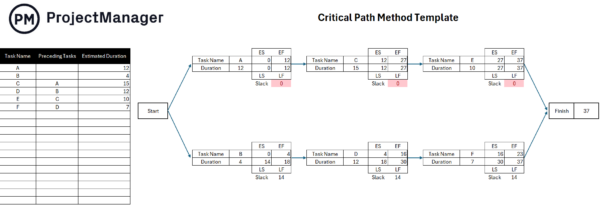
9. Make a Budget and Monitor Project Costs Throughout the Project
Making a budget requires accurately estimating the cost of all the resources needed to complete the various tasks. This is part of the cost management aspect of project management or the planning, budgeting and reporting to keep the project on budget. Therefore, throughout the execution of the project costs must be monitored to ensure that the actual costs are aligned with the budgeted costs that were initially planned when the project was approved.
10. Define Quality Standards for Project Deliverables
Quality standards are the criteria used to define the expectations and requirements for a project’s deliverables, processes and outcomes. The reason to define quality standards for project deliverables is to ensure that the project meets the needs of the stakeholders, customers and users. They can also help prevent errors and defects as rework can waste time, money and resources.
11. Create a Risk Management Plan
Risk is part of life, and it’s certainly a part of any project. Before the project even starts, figure out the potential risks inherent in the work ahead. Identifying them is not an exact science, of course, but you can use historical data and knowledge from your team and sponsors to uncover where the risk lies. Using a risk register template helps you capture all of this information.

It’s not enough to know that risk might rise at certain points in a project; you also should put in place a plan to resolve the issue before it becomes a problem. That means giving each risk a specific team member who’s responsible for watching for it, identifying it and working towards its resolution.
Naturally, can’t foresee every risk, but hopefully, you’ll have at least identified the big ones. That’s why you must keep an eye out for any irregularities and train your team to keep an eye out for risks. The sooner you identify a risk, whether expected or not, the faster you can mitigate it and keep the project on track.
12. Set a Project Performance Baseline
As you progress through your project, you’ll need project performance metrics to measure success. This is how you can hold your team and yourself accountable, so you should always have ways to measure the various aspects of your project and determine if the actual figures reported are in line with the ones you planned.
The great thing about accountability in a project is that it gives you the means to identify team members who are top performers and reward them accordingly. Other team members may require more training or direction to improve their performance.
13. Create a Change Management Plan
As a project manager, you’ll need to know that project plans will likely change as your team starts the project execution phase. Delays, issues, and risks might make it necessary to make changes to your project scope, budget or schedule.
Keeping track of these changes and establishing an approval process it’s called change management, a critical facet to project success as it helps to avoid scope creep and other issues. The change management process is simple. You’ll simply need to create a change management plan, a document where you specify how changes will be handled.
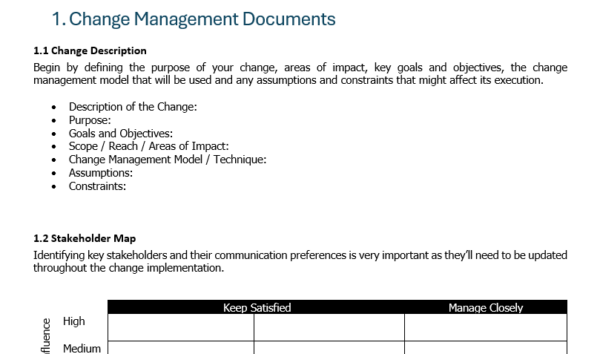
This will guarantee that whenever a stakeholder or a member of the project management team wishes to make a change to the project plan, there will be a change management process in place. In most projects, a change request must be created, filed and approved.
14. Focus on Value Delivery
In any project, it’s always important to focus on your clients’ and stakeholders’ expectations and meet their project requirements. As a project manager, you need to make sure that the project goals and objectives are realistic and agreed upon by the project team and project stakeholders.
Then once you’ve reached an agreement with clients and stakeholders you can think about your value chain, supply chain, milestones, deliverables and quality standards and evaluate whether you’re delivering the expected value. During the project life cycle, you’ll be constantly making decisions that could either increase or hinder the value you deliver with your project.
Some examples of decisions that increase value can be creating a quality management plan or choosing a methodology that allows constant customer feedback and communication for value delivery such as agile or scrum.
More Free Project Management Templates
We have dozens of templates to help you implement the project management principles that we just learned about. Our project management templates will help you at every stage of the project management life cycle, speeding up the process and helping you achieve more.
Project Plan Template
Our project plan template is a great place to start planning your projects. Simply download the file and start putting together your project plan. Then you can start using our many project management features such as our Gantt charts, kanban boards and project calendars to keep track of your project scope, schedule and budget.
Project Budget Template
Your project budget must cover all project costs, otherwise, you won’t be able to execute the work that was planned. It’s important to estimate costs as accurately as possible and document them all. Our project budget template for Excel is the perfect tool for that. However, if you need advanced project budgeting features, give ProjectManager a try.
Gantt Chart Template
Gantt charts are the most versatile project management tools there are. They’re helpful for project planning, scheduling, resource management, task management and more. Our Gantt chart template for Excel is ideal to get familiarized with this tool. Then you can import your data into ProjectManager’s Gantt chart, which allows you to identify the critical path, set task dependencies, set milestones and collaborate with your team in real time.
Put Principles Into Action With ProjectManager
Now that you know the principles, it’s time to get the tools that turn those principles into reality. But the last thing you want is to shuffle through a multitude of apps. ProjectManager is an all-in-one project management software that can help you control projects from initiation to close.
Balance Your Resources
Once the project is executed, it can quickly get out of hand if you don’t have resource planning tools. ProjectManager automates much of your resource management with a workload page that is color-coded, allowing you to see resources at a glance and make adjustments accordingly. There are also task management and collaboration tools to empower teams to work more productively together.
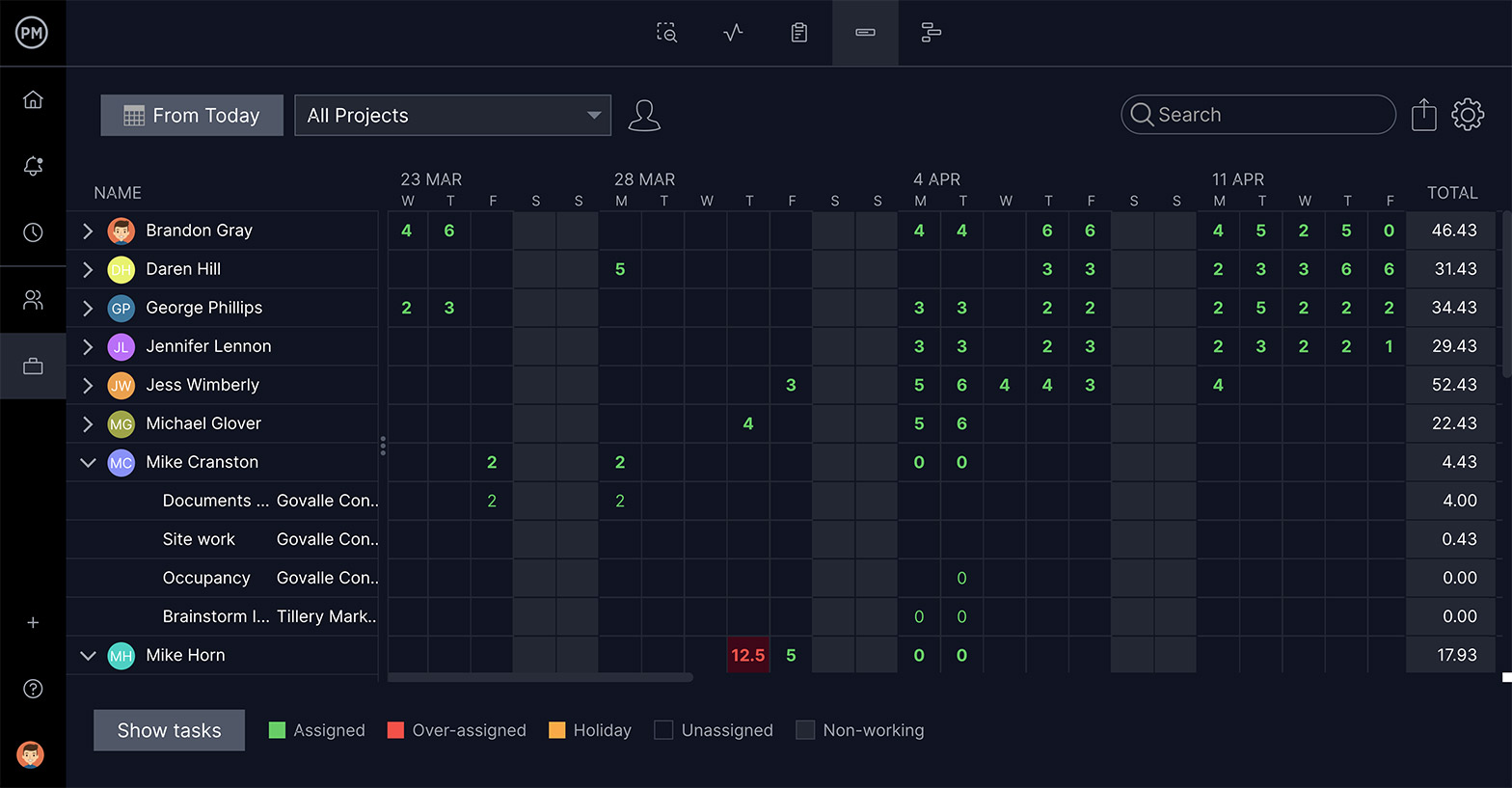
Get Live Progress Updates
Progress is the name of the game, of course, but if you’re not able to track progress as it happens, then you’re behind before you’ve even started. ProjectManager is online software with a real-time dashboard that automatically updates to reflect task progress, costs and other metrics. These numbers are automatically calculated and shown in colorful graphs and charts that make great visuals for stakeholder presentations.

There are more principles to project management. The list might even be endless, but these give you a roadmap to success. But you can’t get there without the right tools for the job. The cloud-based software of ProjectManager has the features you need to implement these principles through every phase of the project’s life cycle. Try it out yourself for free with this 30-day trial, and see how it can help make your job easier and increase project productivity.

